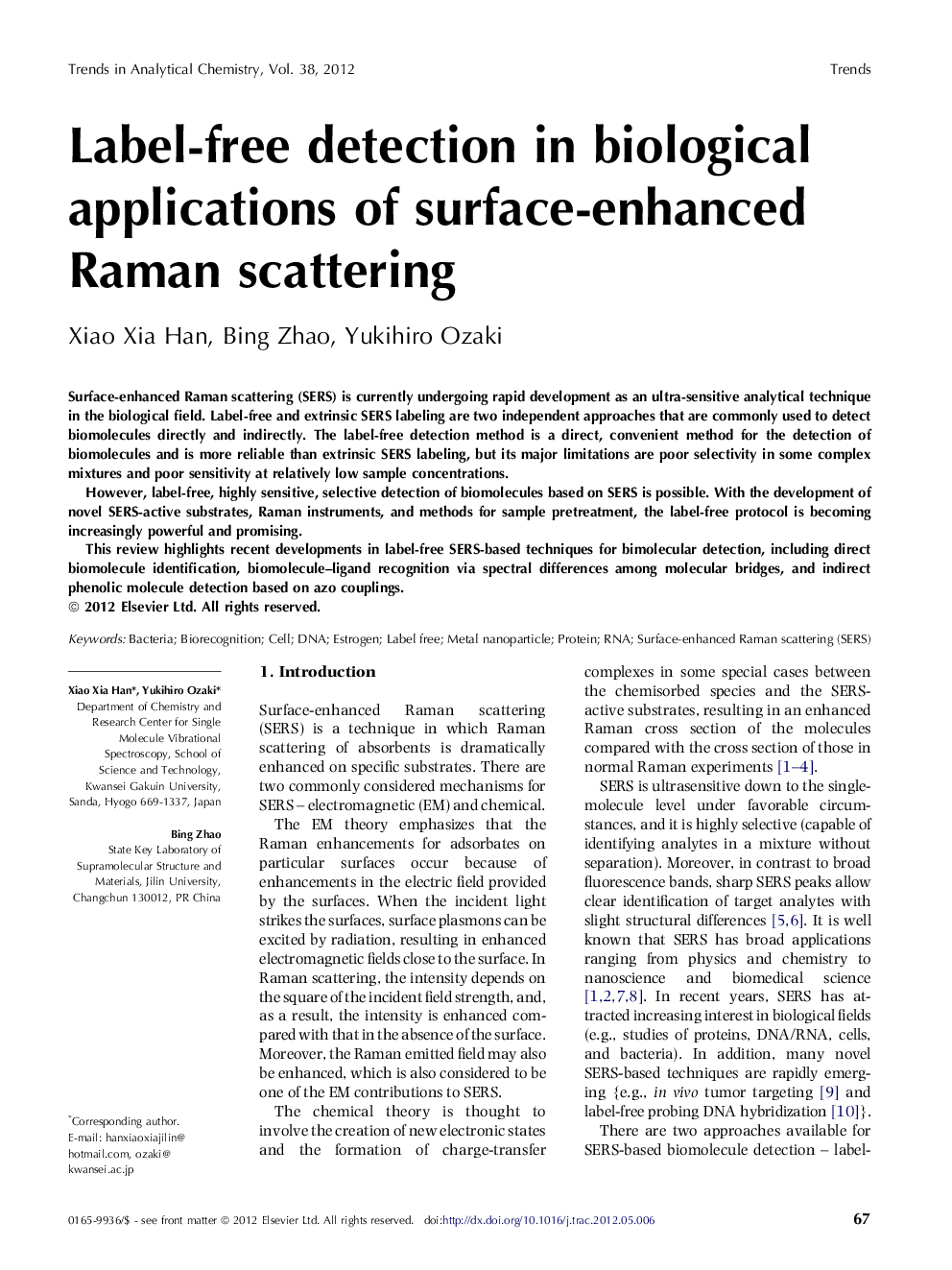| Article ID | Journal | Published Year | Pages | File Type |
|---|---|---|---|---|
| 1249212 | TrAC Trends in Analytical Chemistry | 2012 | 12 Pages |
Surface-enhanced Raman scattering (SERS) is currently undergoing rapid development as an ultra-sensitive analytical technique in the biological field. Label-free and extrinsic SERS labeling are two independent approaches that are commonly used to detect biomolecules directly and indirectly. The label-free detection method is a direct, convenient method for the detection of biomolecules and is more reliable than extrinsic SERS labeling, but its major limitations are poor selectivity in some complex mixtures and poor sensitivity at relatively low sample concentrations.However, label-free, highly sensitive, selective detection of biomolecules based on SERS is possible. With the development of novel SERS-active substrates, Raman instruments, and methods for sample pretreatment, the label-free protocol is becoming increasingly powerful and promising.This review highlights recent developments in label-free SERS-based techniques for bimolecular detection, including direct biomolecule identification, biomolecule–ligand recognition via spectral differences among molecular bridges, and indirect phenolic molecule detection based on azo couplings.
► Development of highly sensitive, biocompatible or reproducible SERS-active substrates. ► Development of SERS-based methods to probe native bimolecular structures. ► Development of methods for biorecognition based on SERS. ► Realization of SERS-based label-free indirect identification.
